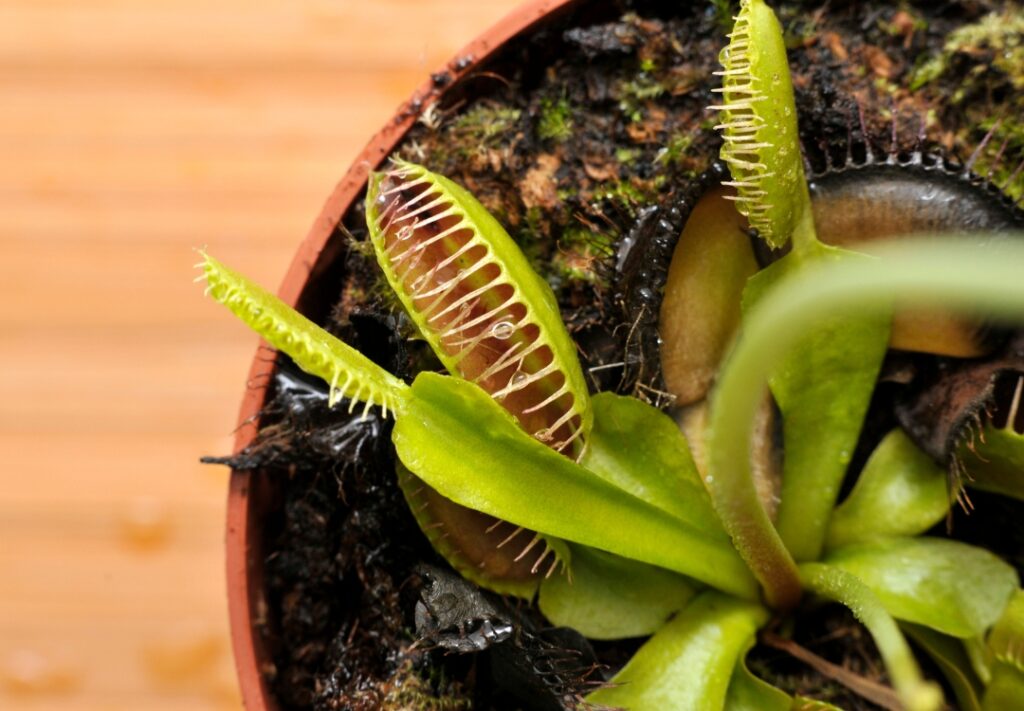Discover how carnivorous plants feed

Cultivating Carnivorous Plants
Carnivorous plants are fascinating and unique in the plant kingdom, as they have the ability to capture, kill, and digest small organisms to obtain additional nutrients.
These plants have evolved in habitats where the soil is nutrient-poor, leading them to develop special adaptations to survive. In this article, we will explore how carnivorous plants feed and what is necessary to cultivate them healthily.
Capture Mechanisms
Carnivorous plants have a variety of capture mechanisms to attract, trap, and digest prey.
Some types, like Dionaea muscipula, better known as “Venus Flytrap” plants, have trap-shaped leaves that close quickly when an insect touches their sensitive triggers.
Others, like Nepenthes, have pitcher-shaped structures filled with digestive fluid where insects fall and are digested.
Digestion and Nutrient Absorption
After capturing prey, the carnivorous plant initiates the digestion process. Special enzymes are secreted to break down the insect’s tissues into soluble nutrients that the plant can absorb.
This process can take several days, depending on the size of the prey and environmental conditions.
Once the nutrients are released, the plant absorbs them through its tissues and uses them to sustain its growth and development.
Suitable Growing Environment
To successfully cultivate carnivorous plants, it is essential to replicate the conditions of their natural habitat. This often involves providing acidic, well-drained, and nutrient-poor soil, such as peat or sphagnum moss.
Additionally, it is important to maintain an adequate level of humidity, as many carnivorous plants are found in wet areas such as swamps and bogs.
Exposure to sunlight is also crucial, as most carnivorous plants require bright light to perform photosynthesis.
Special Care
Carnivorous plants have specific care needs that differ from common plants. For example, they generally do not need to be fertilized since they obtain most of their nutrients from the prey they capture.
Additionally, it is important to use distilled or rainwater to water the plants, as tap water may contain minerals that are harmful to them.
Keeping the traps clean and free of debris is also important to ensure they function properly.
Variety of Species
There are hundreds of species of carnivorous plants worldwide, each with its own capture mechanisms and care requirements.
Some of the most popular for cultivation include the aforementioned Dionaea muscipula (Venus Flytrap), Nepenthes (Pitcher Plants), Sarracenia (Trumpet Pitcher Plants), and Drosera (Sundews).
Each of these species offers a unique growing experience and can add a fascinating conversation piece to any plant collection.
Conclusion:
Cultivating carnivorous plants is an exciting and educational activity that allows gardening enthusiasts to explore a unique aspect of the plant kingdom.
By understanding how these plants feed and providing them with the proper environment, it is possible to cultivate an impressive variety of species and appreciate their beauty and complexity.
With the right care, carnivorous plants can thrive and provide years of enjoyment and admiration for their growers. If you enjoyed the article on Cultivating Carnivorous Plants, leave your comment and also follow related articles to stay informed. Enjoy the read!


